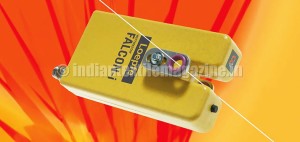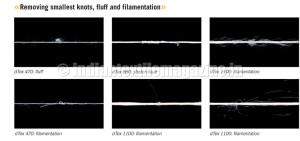Loepfe’s Brothers Ltd.’s optical yarn defects sensor, WEFTMASTER FALCON-i, is for simple and reliable monitoring of all finest knots, filamentation, fluff, smallest thick places or capillary breaks on running threads. The device is not only complementing the various available knotless weaving concepts, but can be used in many different processes down the textile production chain, wherever an individual yarn monitoring should ensure quality.
In order to monitor an individual thread for finest knots, fluff, filamentation, smallest thick places or even capillary breaks, Loepfe’s newly-developed FALCON-i sensor is generally installed before or after a weft feeder. The thread can be monitored by using sensitivity levels, to be set manually or automatically. The automatic mode determines the sensitivity level itself. The sensor is insensitive to vibrations which can be extremely disturbing, especially with laser measuring devices, and which could cause false stops.
When contamination is severe, the sensor can also be installed upside down. This allows most reliable and constant monitoring. The thread is guided virtually contact-free through the optical measuring field by yarn guides before and after the sensor, and a stop is triggered for defined faults. The color of the thread to be monitored also has no influence on measurement reliability.
It is, therefore, possible to monitor the latest high-tech materials like carbon without problems with FALCON-i. Monofilaments, multifilaments as well as spun yarns in any material composition can be processed. Conductive materials can also be processed without restriction. The housing of the sensor is made from shielding material so that any existing static or electro-magnetic fields will not affect measurement reliability.
The FALCON-i sensor is microprocessor-controlled and therefore provides many options for connection to evaluation modules. The latest findings and experience flow into the design work of the company software engineers. Adaptations of the software and individual adaptations to customer requirements can therefore be easily implemented through software upgrades of the already available sensors.
Loepfe is today a global leader in manufacturing optical yarn clearers for automatic winding machines. Many years of experience in this field enabled development of the new optical FALCON-i sensor. Technical support and spare parts availability, even many years after purchasing the sensors, are a matter of course for Loepfe.

